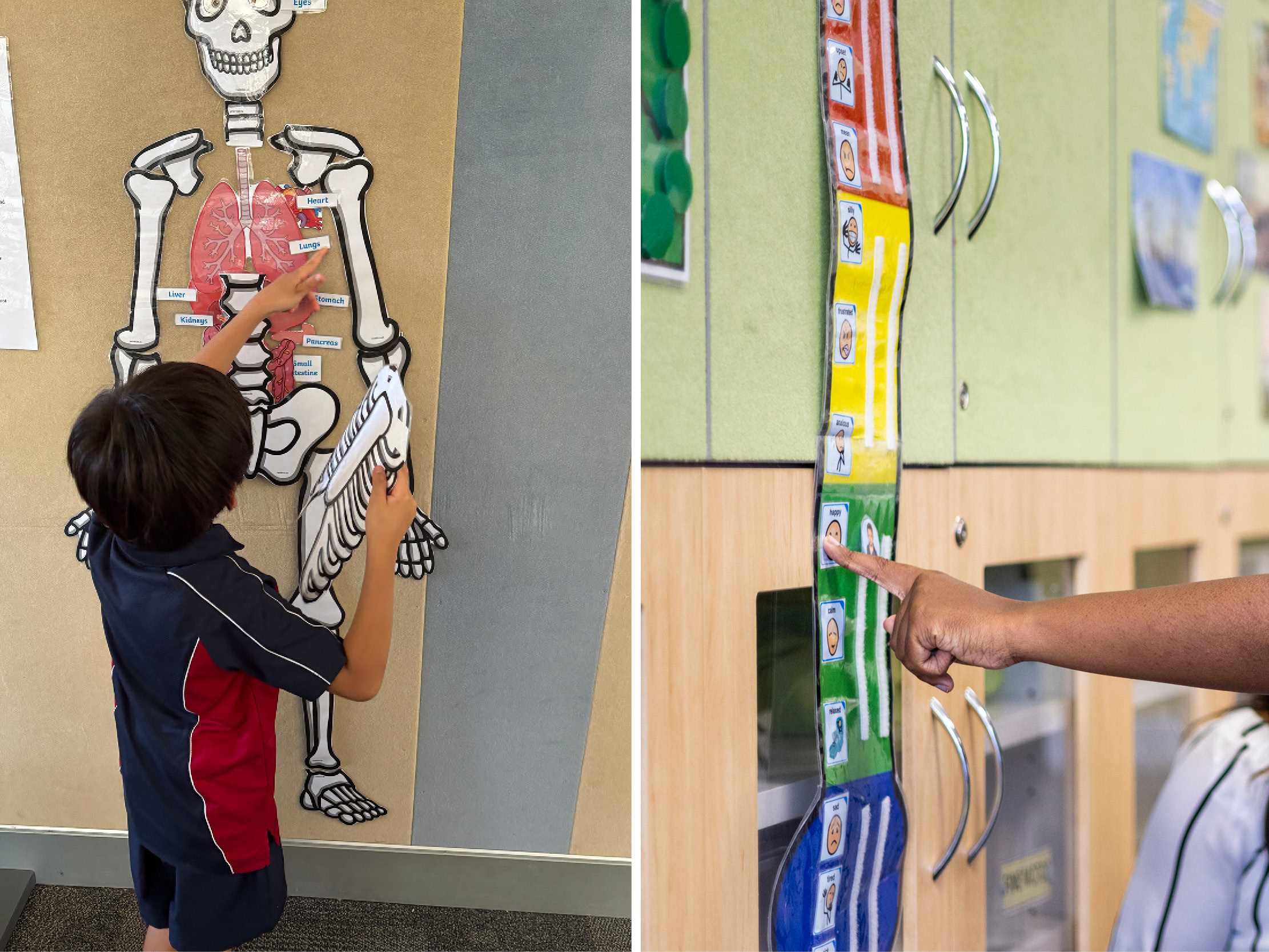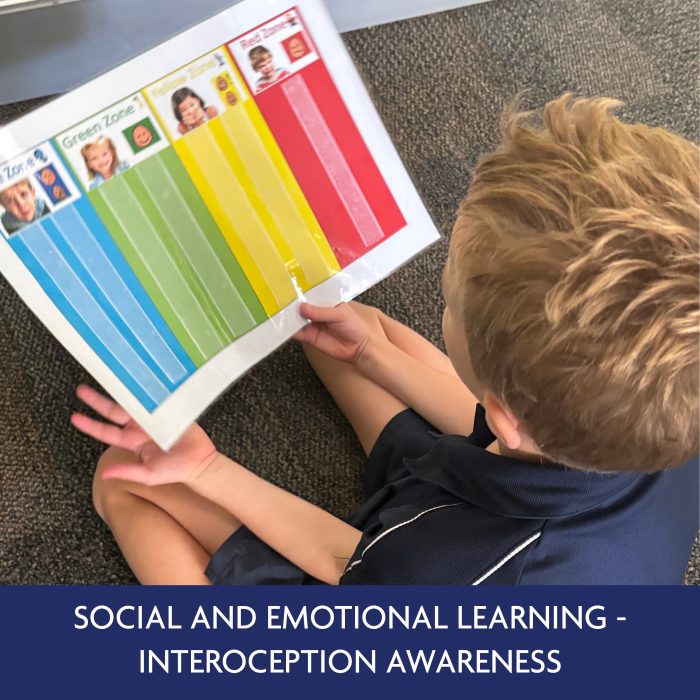Social and Emotional Learning – Interoception awareness
St Lucy’s is implementing explicit social and emotional learning (SEL) programs with students from K – 12 as part of dedicated timetabled Wellbeing sessions. These skills are reinforced in the playground and across the school. This article describes how we implement this for our youngest students.
In Term 1, students in Kindergarten to Year 2 are undertaking a unit focused on Interoception Awareness and Coping Strategies (such as breathing). During Assembly each week, primary students are undertaking an interoception ‘experiment’, which is currently focused on clapping their hands while counting to 10 and identifying how their hands feel after.
There is a growing body of science in relation to interoception which is sometimes referred to as the ‘8th sense’. Interoception is an internal sensory system where a person notices internal physical signals. These physical signals are used by the brain to help identify what the body needs and/or the person’s emotional state e.g feeling tension on my bladder muscles as my bladder is filling or is full, tells me that I need to urinate; my heart beating fast and butterflies in my stomach tells me that I feel nervous.
Interoception, tends to be ‘atypical’ in people with developmental disabilities, mental health disorders, trauma, intergenerational trauma, and chronic stress (Goodall). Young people will have difficulty with their emotions and social interactions if they have not developed interoception skills (Department of Education South Australia). Therefore, a focus on Interoception Awareness can be beneficial for young people, particularly those who may have ‘atypical’ interoception or a unique sense of interoception.
Interoception awareness can support a young person in identifying:
- That a body part hurts or that they are experiencing a symptom(s) of illness
- That they are feeling hot or cold
- An Emotional state (e.g. happy, anxious, frustrated)
- The Need for urination or a bowel movement
- The early signs of feeling distressed
- That they are feeling hungry, thirsty, or full.

In identifying the signal and corresponding body or emotional state, the young person may respond to this state, or an adult can support the young person in responding appropriately to the signal or state once it is identified. This can lead to:
- Addressing a physical need/feeling e.g. by putting on a jumper when cold, having a drink when thirsty
- Responding to early signs of distress by implementing a coping or a self-regulation strategy e.g. breathing/taking a break
- Getting help/treatment when hurt or feeling unwell
- Successfully toilet training.
Developing this awareness and then responding to the physical signals and what they indicate can lead to an increase in independence, agency, and pro-social behaviours.
To support the development of our SEL programs for interoception awareness, St Lucy’s educators have been drawing on expertise through conferences, workshops, articles, and published materials. We have been particularly engaging with the work of the Department for Education South Australia, Dr Emma Goodall and Kelly Mahler.
The Department for Education in South Australia has produced a range of free resources to support the development of Interoception including resources for parents and carers. This booklet contains information about Interoception and a range of activities to support the building of interception awareness. We look forward to hearing about how your young person engages with interoception activities.
Susan Jones
Deputy Principal, St Lucy’s School



